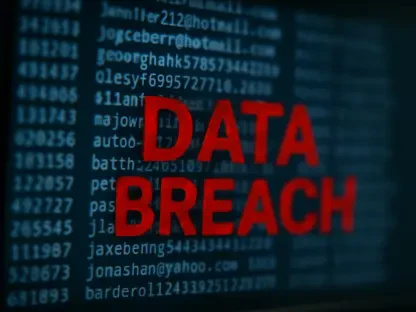Listen to the Article
As ransomware groups evolve past smash-and-grab cybercrime, more companies are facing the consequences of campaigns rampant with psychological warfare, reputational sabotage, and financial extortion. However, this is not a technical evolution, but an operational upgrade built on the very models used by the victims themselves.
Through the advent of double-extortion ransomware through exfiltration, encryption, and extortion of third parties, highly sophisticated threat actors like Medusa and Hunters International are able to execute attacks with near-surgical precision. In this article, you will uncover the tactics leveraged by modern adversaries—as well as how to redefine resilience in the face of the fallout that follows.
New Age Ransomware Tactics
Ransomware has entered its second act to make way for more strategic, invasive, and exponentially more dangerous attacks. Starting as a blunt-force tactic where files are encrypted and crypto is demanded, ransomware attacks have evolved into more calculated campaigns driving multi-layered extortion—with threat actors now adopting double-extortion ransomware models.
The Three E’s of the Double Squeeze
Gone are the days of simple file encryptions that can be combated with a backup solution. While this legacy method of paralyzing systems and sabotaging backups is less effective, it remains a tactical move that buys attackers time in their long game. Now, the threat of data exfiltration looms.
Before a file is locked, ransomware groups stealthily infiltrate systems and steal sensitive data—from IPs to credentials. Finally, this harvested information is extorted, not just to the detriment of the breached victim, but to everyone they’ve ever engaged with. Attackers leverage the stolen data to put pressure on all involved, from clients to investors, and ignite a reputational firestorm.
Inside the Mind of Medusa
As a prominent threat actor with over 300 victims globally, Medusa has illustrated just how malicious this strategy has become by merging technical expertise with psychological warfare. Not only do they put countdown clocks on selectively leaked data, but this group also maintains a consistent social media presence on platforms like X to add a public-facing element to their tactics. To maximize urgency, this move enables them to increase pressure on victims while demonstrating their nefarious capabilities publicly.
How Hunters International Does It
For businesses with deeply integrated ecosystems, the perils of double-extortion ransomware ripple from a single breach to reverberate throughout entire operations. Groups like Hunters International are professionalizing attacks by modelling themselves on legitimate SaaS providers and offering ransomware-as-a-service to target major corporations like Tata Technologies, from whom they stole 1.4 TB of data to use as leverage.
According to Group-IB, the sophistication of this ransomware group can be found in its business-like setup that’s even equipped with a well-defined workflow. Attackers have access to an affiliate panel to communicate with victims, customize ransomware, and retrieve ransoms. Upon collection, the affiliate goes home with 80% of the payment, with the rest going back to Hunters International.
Fallout Beyond the Breach
When such breaches hit, it’s not the initial malicious activity that brings down businesses, but the fallout that follows. Data encryption opens the door for devastation to enter and disrupts B2B environments where trust is currency and the erosion of credibility spreads like wildfire. Adding fuel to this is the legal implications that ensue, therefore propelling the importance of understanding the compliance landscape.
In cases where customer or employee data is exposed, companies can become liable for damages, and affected individuals can sue on the basis of negligence due to inefficient protection. Violating GDPR, CCPA, and HIPAA regulations can also result in six to seven-figure penalties, depending on the nature of the breach. Any sort of major legal action is considerably harmful to a business’s reputation—especially for enterprises with insufficient resources.
Reviewing Contractual Vendor Agreements
To limit these liabilities outside of strengthening cybersecurity strategies, organizations need to establish and evaluate robust contractual vendor agreements. The most important aspect to focus on is the cybersecurity clauses included, which function as the frontline of defense against sophisticated threats.
Security Standards
With the increasing reliance on third-party vendors, especially when it comes to cloud services, it’s more important than ever to scrutinize vendors’ security practices. This clause needs to specify the protection controls that vendors must implement to efficiently safeguard data. These detailed requirements include guidelines for data encryption, access controls, vulnerability management, and secure development protocols.
Indemnification Clause
Including indemnification provisions in vendor contracts shifts the financial responsibility for data breaches from the company to the vendor. However, it can be argued that it’s inappropriate for vendors to bear the risks linked with third-party hackers as they play no active role in their protection. Therefore, it’s imperative that there is explicit mention of data security or third-party data breach when crafting your contracts. This is to safeguard companies from further financial loss and reputational damage.
Audit Rights
By establishing clear rights to audit a vendor’s security practices and compliance with contractual safeguarding obligations, this clause can limit a company’s liability in the case of a breach. To do so, it’s essential to outline the scope of audits, as well as how often an organization can conduct one. There also needs to be an evident mention of a vendor’s responsibility to cooperate and provide access to relevant data throughout the process.
Rethinking Defense By Assuming Attacks
When it comes to proactively defending against double-extortion ransomware, the traditional castle-and-moat mentality is no longer strong enough to keep the threats at bay. It requires smarter and more distributed resilience against insurgent-like ransomware groups. With a skyrocketing 108.9 million accounts breached in Q3 of 2022, the question to ask is not “what if a breach occurs”, but rather “how often?”
By adopting an assume breach approach, companies sidestep the vulnerabilities of conventional prevention tactics by constantly being prepared for attacks. By treating environments as if they are already compromised, enterprises can limit at-risk systems and process trust, while propelling asset protection.
When ransomware bypasses initial perimeter controls, adversaries unlock unrestricted access to sensitive resources. As a key player in the assume breach approach Zero Trust continuously verifies identities regardless of physical locations. This mitigates the potential for allowing implicit user trust and limits the scope of what they’re able to achieve on the network, including threat actors—therefore minimizing exposure.
It all begins by fostering a deeper understanding of tactics used to steal data, infiltrate networks, and disrupt operations. By knowing the intricacies of the threat landscape, companies can confidently familiarize themselves with the most current attack methods and take a proactive stance against them. Businesses then need to know how to recognize the downsides of identity and rules-based access controls to determine how attackers are able to gain system access.
Conclusion
The reality of today’s attack surface has made it clear that getting into the minds of threat actors isn’t an option, but a mission-critical necessity. Businesses simply cannot afford to restrict themselves to reactive defense in the face of double-extortion breaches, especially when sensitive information is involved. This requires companies to take a more proactive stance against ransomware-as-a-service groups by integrating controls, contracts, and communication practices as if breaches are continuously occurring.
When it comes to surviving and thriving amid the most recent wave of ransomware attacks, the organizations that redesign how trust, data, and accountability are enforced are the ones winning the game. The most significant vulnerability in this case isn’t just related to data loss—it’s operational denial. Therefore, reinforcing your ability to respond through propelled preparedness and unparalleled understanding will serve as your greatest superpower.









